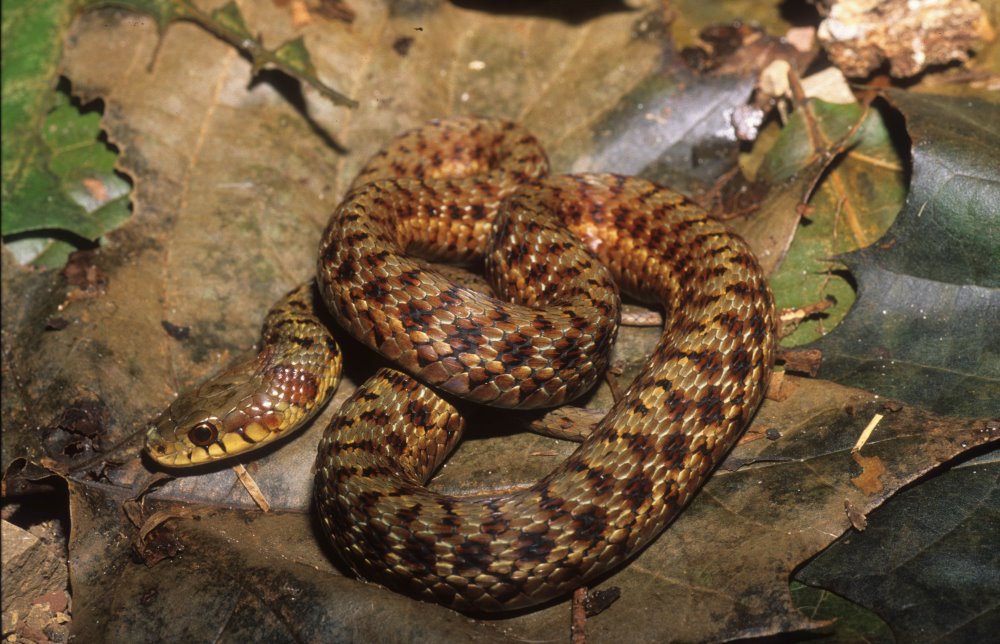
This, the western yellow-bellied racer, is the most westerly of the racer clan.
Racers as a group of 11 subspecies, range across the USA from Maine and Florida to California and Oregon. Think about that. Then add to that thought that one subspecies, the eastern yellow-bellied racer ranges from just north of the USA/Canadian border to southern Texas (not quite to the MX border) and both the facts and the snake species itself, Coluber constrictor by name become even more impressive.
Except for 2 subspecies in the southern Midwest the racers are of a rather uniform but variable color both dorsally and ventrally. The dorsal color may be black, olive-tan, blue, or gray, The ventral coloration of many subspecies is the same or slightly lighter than the dorsal color. The common names, such as black racer, blue racer, yellow-bellied racer, tan racer, black-masked racer, even a buttermilk racer the latter being a blue to tan snake with groups of lighter scales that resemble the curds in buttermilk. To these may be added a regional feature such as northern, southern, eastern, western, or a more specific area such as the Everglades. In actuality the names are quite descriptive.
Besides the racers there are several other coast to coast snake species. Among these are the eastern garter snake, Thamnophis sirtalis. This variable species starts at the east coast with the eastern, Maritime, and blue-striped garters and terminates on the shores of the Pacific with the more gaudy San Francisco, California red-sided, and Valley subspecies.
Ditto with the ring-necked snakes, Diadophis subspecies, beginning on the eastern seaboard with the northern and southern ringnecks and transitioning on the West Coast into a host of beautiful, subspecies with remarkably brightly colored bellies.
And although there are others, I’ll cease and desist with mention of the hobbyist favorite, the kingsnakes of the genus Lampropeltis. Ignoring the current trend to make species out of subspecies or to not recognize appearance differences at all, we begin on the California coast with the pretty and variable California kingsnake, transitioning eastward first to the desert king, then after a broad area of intergradation to the speckled, black, eastern and Florida races.
The United States, a wonderland of herpetological diversity, no matter what your classification system may be.
Although not overly colorful in the east, western subspecies of the common garter snake may incorporate bright red in their overall color schemes.

Cross-country diversity both in color and pattern varies from the eastern kingsnbake in the east to the California kingsnake in the west.




